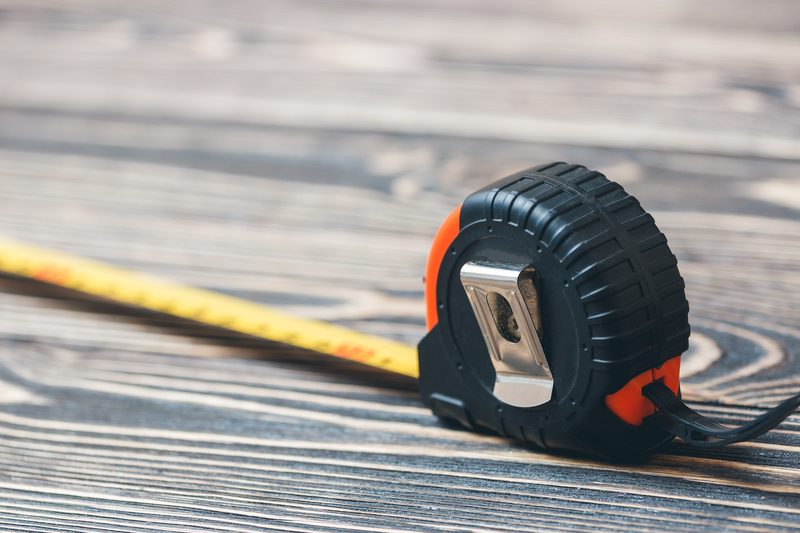Your Guide to Properly Preparing a Freezer for Long-Term Storage
Are you planning to store your freezer for an extended period? Whether you're moving, renovating, or simply need to temporarily switch off your appliance, knowing how to prepare a freezer for long-term storage is essential. Proper preparation not only preserves the integrity and efficiency of your freezer but also prevents issues like mold, odors, and damage.
This comprehensive guide will walk you through every step necessary to ensure your freezer is ready for storage--protecting both your appliance and everything you plan to freeze in the future. Let's dive in!
Why Proper Preparation Is Crucial for Long-Term Freezer Storage
Many overlook the importance of preparing a freezer for storage. Failing to prepare your freezer adequately can lead to unpleasant surprises such as:
- Mold and mildew growth inside the freezer
- Unpleasant, persistent odors
- Corrosion and rust on the interior and exterior
- Problems with pests and insects
- Mechanical issues when restarting the appliance
Proper preparation ensures your freezer remains in top condition and is ready for use when you need it again.

Step-by-Step: Preparing a Freezer for Long-Term Storage
Step 1: Empty the Freezer Completely
Begin by removing all items from your freezer. If you're storing food elsewhere, ensure it stays at an appropriate frozen temperature. Food left behind, even by mistake, can spoil and cause odors or even structural damage to the freezer.
- Transfer perishable items to another freezer or cool box.
- Recycle, donate, or dispose of expired or unwanted items.
Step 2: Defrost The Freezer
For long-term storage, always defrost your appliance fully. Ice buildup can cause damage to the interior lining, doors, and seals if left unchecked. Here's how to do it:
- Unplug the freezer and leave the door open.
- Place towels or shallow pans at the base to catch melting ice and water.
- Allow several hours for the ice to melt completely; avoid using sharp objects to speed up the process.
Tip: Use a hairdryer on a low setting or bowls of hot water inside (with the freezer unplugged) to quicken defrosting, but always supervise the process to avoid accidents.
Step 3: Clean Thoroughly for Hygiene
Once the freezer is defrosted and dry, clean every surface. This prevents bacteria, mold, and musty odors from developing during storage.
- Prepare a mild cleaning solution: Mix baking soda with warm water (about 2 tablespoons per quart).
- Use a soft cloth or sponge to wipe all interior surfaces including drawers, shelves, door gaskets, and trays.
- Rinse with a clean, damp cloth to remove any residue.
- Dry all surfaces thoroughly with a towel.
Don't forget to wipe down the outside of the freezer, especially handles, control panels, and any venting grills.
Step 4: Remove and Clean Removable Parts
Shelves, drawers, and trays should be taken out for separate cleaning. Use mild soapy water, rinse well, and dry completely before replacing.
- Check these components for cracks or damage and replace if necessary.
- Make sure everything is bone-dry to prevent mold growth in storage.
Step 5: Eliminate Odors - Baking Soda and More
After cleaning, leave an open box of baking soda, a few charcoal briquettes, or commercial odor absorbers inside the empty freezer. This absorbs any lingering odors and maintains freshness during storage.
Step 6: Secure the Door or Lid
Storing your freezer closed can trap moisture, leading to mold and mildew. Always secure the door or lid so that it remains slightly ajar throughout storage. Use a rolled towel or prop, or some models may have built-in door locks for this purpose.
- This allows air circulation and prevents unpleasant growths inside.
- Use tape or a bungee cord to keep the door/s slightly open if necessary.
Step 7: Store in the Right Location
Where you store your freezer for long-term is as important as how you clean it. Choose a location that is:
- Dry, with low humidity
- Away from direct sunlight, to prevent warping and discoloration
- On a stable, elevated surface to avoid contact with water in case of leaks or floods
- Free from pests and insects
- With ambient temperature within the manufacturer's recommended range
Tip: Garages, sheds, basements, or storage units are common choices, but ensure the space is secure and ventilated.
Step 8: Protect Electrical Components
Moisture and dust can damage the electrical parts of your freezer during long-term storage. Before putting the appliance away:
- Bundle and secure the power cord with a twist tie or zip tie.
- Protect the plug by slipping it into a zip-lock bag or wrapping it in a cloth.
- Tape the cord securely to the back of the freezer to prevent tripping or tangling.
Step 9: Cover the Freezer for Extra Protection
To guard against dust, pests, and accidental scratches, drape the freezer with a breathable cover, old sheet, or furniture blanket. Avoid using plastic sheets that can trap moisture and cause condensation inside.
Step 10: Check Periodically
Even in long-term storage, periodically inspect your freezer:
- Ensure that the door remains slightly open.
- Look for signs of mold, pests, or rust.
- Clean up any water or dust accumulation.
Extra Tips for Storing a Freezer Long-Term
- Check Manufacturer's Instructions: Always review any specific guidelines provided in the freezer's user manual. Some models may have unique recommendations for long-term storage.
- Label and Document: Place a label on the freezer with your contact information and storage start date for easy identification.
- Insurance: If storing your appliance in a facility, ensure it is covered by your insurance policy.
- Transportation caution: If you plan to move the freezer, transport it upright to avoid compressing or damaging internal components.
What to Avoid When Storing a Freezer Long-Term
- Never store a freezer with food inside. Even durable frozen foods can spoil after prolonged periods of power-off, risking bad odors and bacteria.
- Do not tightly seal the door or lid--this promotes moisture trapping and mildew.
- Avoid wrapping with plastic or non-breathable material that can trap condensation.
- Never store a freezer outdoors without weather protection!
After Long-Term Storage: Getting Your Freezer Ready Again
1. Inspect the Appliance
Before plugging your freezer back in, check the following:
- Interior and exterior for mold, rust, or physical damage
- Door seals for cracks or deterioration
- Electrical cord and plug for damage or corrosion
- Odors--wipe down the interior again with baking soda if needed
2. Re-assemble & Clean
Replace any removable shelves or drawers. Clean thoroughly if any dust or pests entered during storage.
3. Plug In and Run Empty
Plug the freezer in and run it empty for several hours to confirm it cools normally and there is no mechanical issue.
4. Restock and Enjoy!
When confident the freezer is functioning properly, you can once again load up your frozen goods, knowing your appliance has survived storage in pristine condition.
Frequently Asked Questions About Long-Term Freezer Storage
1. Can I store a freezer in a non-climate-controlled unit?
It's best to use a climate-controlled space. Extreme temperatures and humidity can lead to rust, mold, and electrical problems. If a non-controlled unit is the only option, take extra precautions with the door, cord, and moisture-absorbers.
2. How long can a freezer go unused before potential issues arise?
There is no strict time limit. However, after several months, check for dust, rust, and pests. Regular monitoring is key to preventing surprises when turning the appliance back on.
3. Should I lay my freezer on its side during transport or storage?
Always keep the freezer upright. If you must lay it down, allow it to stand upright for at least 24 hours before switching it back on. This allows the compressor oil to recede to the right place.

Summary: The Best Way to Prepare a Freezer for Long-Term Storage
Properly preparing your freezer for long-term storage is an investment of time that pays off by preserving the life and performance of your appliance. Through a series of thorough steps--defrosting, cleaning, deodorizing, positioning, and regular inspection--you can ensure your freezer will remain odor-free, free from mold, and ready to serve you well in the future.
By following the clear steps in this long-term freezer storage guide, you'll protect your investment and avoid unnecessary replacement or repair costs.
Key Takeaways
- Always empty, unplug, defrost, and clean the freezer thoroughly before storage.
- No matter the storage area, keep the freezer door slightly open for ventilation.
- Store the appliance in a dry, shaded, pest-free environment on a stable surface.
- Protect electrical components and check periodically for issues.
- Take extra steps to control odors and moisture while in storage.
- Consult your user manual for model-specific tips on long-term freezer storage preparation.
With this in-depth guide, you're now equipped to extend the life of your freezer and enjoy hassle-free storage--whether for a month, a season, or even longer!